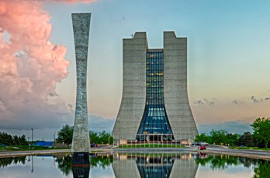Speaker
Dr
Calum Torrie
(Caltech employee giving invited talk)
Description
In Sep 2015, the Laser Interferometer Gravitational-wave Observatory (LIGO) initiated the era of gravitational wave astronomy with the first direct detection of gravitational waves (ripples in the fabric of space-time), resulting from the merger of a pair of black holes. In Aug 2017 the U.S.-based LIGO, the Europe-based Virgo, and some 70 ground- and space-based observatories jointly made the first direct detection of gravitational waves associated with a gamma ray burst and subsequent kilonova afterglow emission (visible, infrared, radio) from the collision of two neutron stars. This marks the beginning of multi-messenger astronomy.
The two LIGO detectors (Hanford, WA and Livingston, LA) employ coupled optical cavities in a specialized version of a Michelson interferometer with 4 kilometer long arms in a ultra-high vacuum system. The initial alignment of these observatories was accomplished with differential GPS and optical surveying techniques. Optical lever sensors are used to retain alignment reference for key optics. Active feedback control using wavefront sensors enables precision alignment of the resonant optical cavities. The alignment requirements and strategy are described.
Primary author
Dr
Calum Torrie
(Caltech employee giving invited talk)
Co-author
Mr
Dennis Coyne
(Caltech employee)
